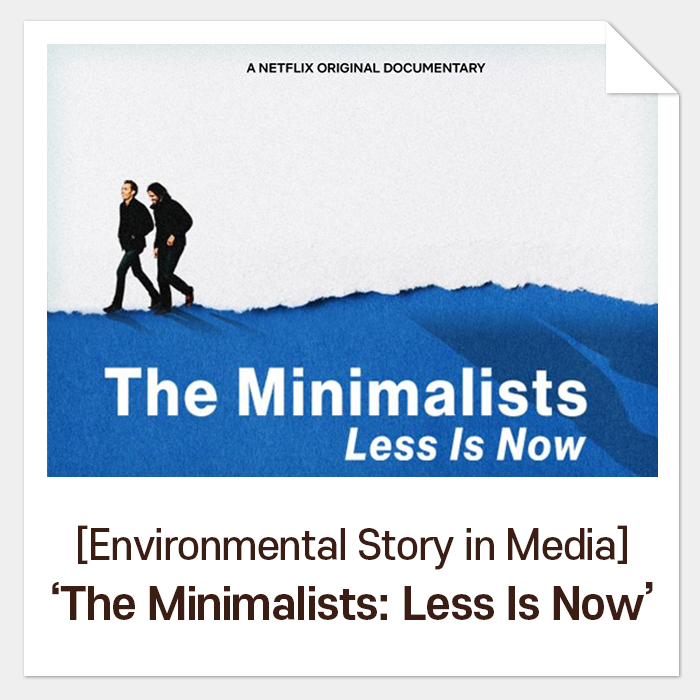[Environmental Story in Media] A Common, yet Great Hero, ‘No Impact Man’
‘No Impact Man’ refers to a person who does not give any impact on the earth. In the documentary film ‘No Impact Man’, the main character Colin is a writer living in Manhattan, New York. He especially describes himself as an activist writer, not just writing a book. Then, how does Colin reflect his spirit on actions? He wants to contribute to the world with his work that is written based on his actual actions and experience. While he was considering a theme of environmental protection for his next book, he came up with an idea for this project called ‘No Impact Man’ to live a year in an environment-friendly way and share his and his family’s real story.
The first thing he removed from his life was TV. To reduce carbon dioxide emissions, they avoided taking petrol-driven transportation such as taxis and subways, replaced toilet paper and a refrigerator with cloth and a pot-in-pot. They made detergents from scratch with natural ingredients and did not use any HMR or disposable plastic product not to make packaging waste. As the livestock industry is closely linked to greenhouse gas, the family went for vegetarianism and only purchased the vegetables produced locally. He even tried home composting food waste with worms.
Advancing steps, Colin even stopped using the light after 6 months at night. His family had their work done during the daytime and lighted a candle at night. It seemed that they rather refused civilization than protected the environment.
People watching his project at that time must have had a similar thought. As his ‘No Impact Man’ project went viral, he soon started to get a lot of attention from mass media. When he was asked why he was taking such an extreme way for this project, Colin said that we would be able to figure out what we really need to take in this way.
Presumably, the project did not smoothly. Colin and his wife Michelle had a lot of arguments, and Colin himself sometimes felt skeptical about the project, running into social structure hurdles that an individual could not overcome. Some criticized that it was a mere marketing strategy to sell his next book and some refused to be near Colin’s family due to hygiene issues.
The project finally came to an end after a year, but it was hard to consider a success. He may have gotten some attention from the public, but his personal effort was not strong enough to bring a significant change to society. On the other hand, his struggle for the year did bring influence people. Michell, a typical representative of a modern society, who was addicted to a disposable consumption culture, showed her willingness to keep practicing some of the ways she had done for the project such as reducing the waste, riding a bike, etc. Also, Colin was invited to a New York University as 200 students wanted to participate in the ‘No Impact Man’ Project for a week.
The movie kept asking what it means to act and practice for the environment and makes us think about what each of us can do right now. Colin and his family’s extreme experience may not be an available option for us, but wouldn’t it be possible to make a small yet definite difference if we eat and use what is absolutely necessary while reducing transportation foodprint? In addition, if an individual, an organization, a company, and a government takes an action, the impact must be even greater.
<No Impact Man> released in 2010 received rave reviews, for it showed a practical example and promoted viewers to be more active in participation for the environmental protection. Why don’t you see Colin and his family’s effort not to give any impact on the environment and think of ways to protect our earth?








Comments
Post a Comment